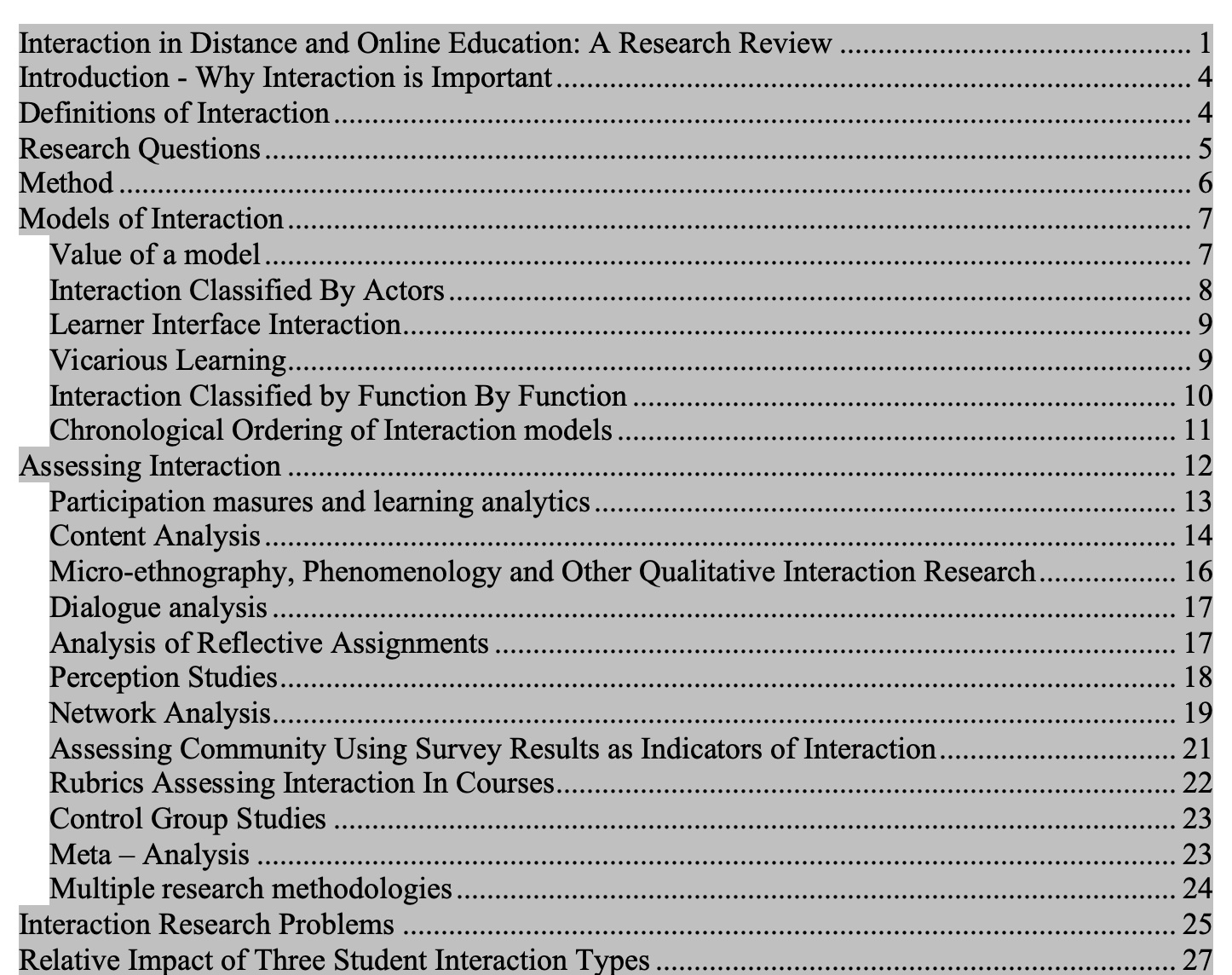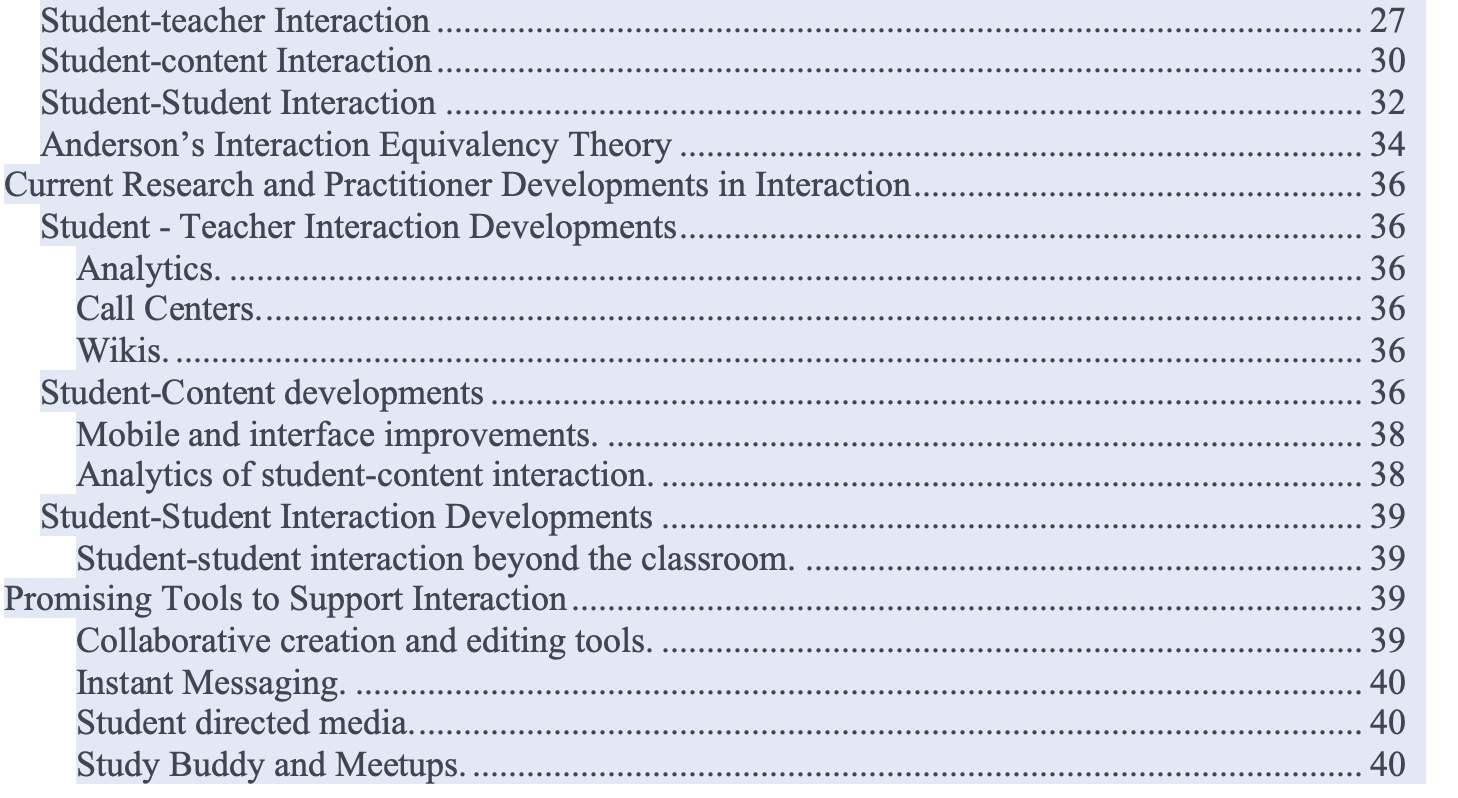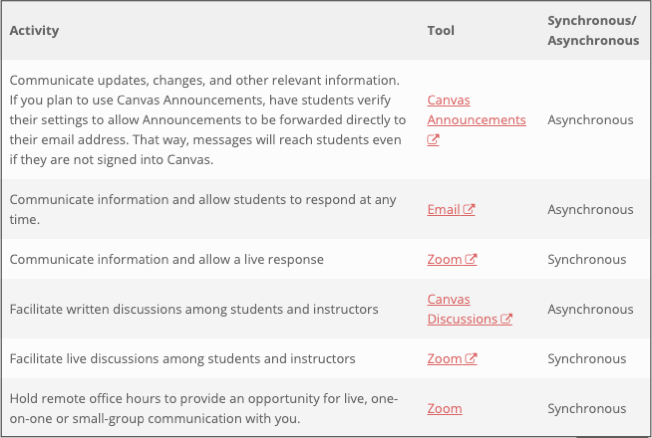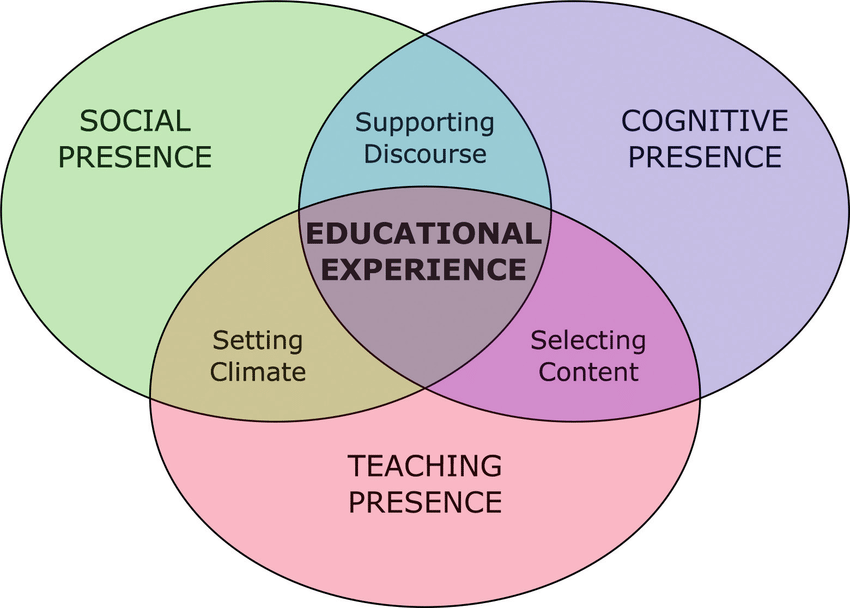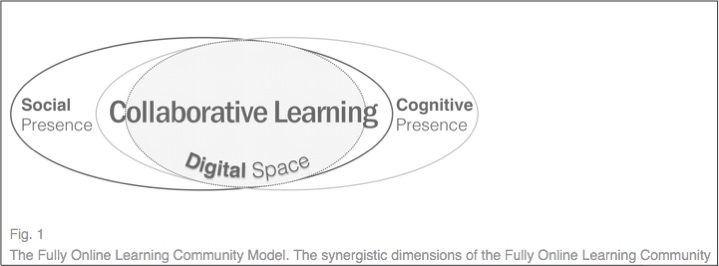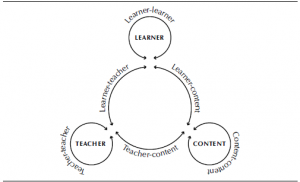The Community of Inquiry has emerged as the most widely referenced (the seminal 1999 article approaches 3,000 citations) and arguably the most widely used model for constructivist based e-learning design and research. I’ve always thought that it’s greatest strength is its simplicity (only 3 major, but interacting components) and the way the model can readily be used by teachers to devise and evaluate online learning courses and by researchers to guide the development of research questions and data collection strategies.
In the late 90’s we were interested in showing empirically that emerging ‘new’ forms of interactive distance education could support the type of high quality learning that is possible (though certainly not always available) in classrooms. We wanted to provide evidence for Randy Garrison’s claim that this was a new mode of teaching and learning that was education at a distance – not high tech, traditional cognitive behavioural style distance education. Thus, we focused on a key component of constructivist learning –social presence. We also picked up on Randy’s earlier work (based on Ennes, Paul and Lipman’s work) on critical thinking to devise the phases of cognitive presence. Finally, though Walter Archer, Randy and myself were all active in informal adult learning, we realized that the activity we were focusing on took place in institutional contexts with students studying in degree programs. Thus, we wanted a focus on the critical design, facilitation and subject matter expertise components of teaching presence.
Perhaps we quit too early, as this post argues next, but we had created a parsimonious model that was easily illustrated in the now famous COI Venn diagram. I also recall the fluidity with which new indicators were added to each of the presences as we poured over the transcripts from asynchronous computer conference based courses. In early days, it was easy to add, delete or reword indicators, but the three presences seemed to us then to account for all the major themes of successful online courses. A special call out here to Liam Rourke who worked as a graduate student on this project, and was responsible for much of this early identification and classification work. The COI work was especially enhanced with the development by Ben Arbaugh and colleagues of the COI survey, which made it much easier to gather perception data to measure each of the three presences.
We have never argued that the model identifies all possible components of successful formal education – either online or in the classroom. And perhaps not surprisingly, it wasn’t long before additions (and a few deletions) were suggested. For example, David Annand, (2011) suggested that social presence wasn’t really needed for effective teaching and learning.
A number of researchers picked up on the need for the contextual or interface “presence” and in the case of distance education for the participants to master the mediating technology. Gilly Salmon (2000) in her famous 7 step e-learning moderation model sees such technical support as a key component of each of her moderation steps. I was never that impressed with these arguments as every context – including classrooms, uses some combination of asynchronous and synchronous media to support teaching and learning. Thus, the “presence” of the media and the need for and skill with which teachers and learners adapt to it is a minor factor that is unique to each teaching and context and I thought would needlessly complicate the COI model.
First came the close to convincing arguments from Peter Shea and his colleagues that the COI model lacked awareness of the critical role that the learner plays in formal education. We all realize that the same learning context and interventions can affect different students with vastly different effect. Thus, Shea and Bidjerano (2010) postulated the need for Learner Presence to account for these important learner set of variables in either online or classroom education.
Marti Cleveland-Innes, Prisca Campbell (2012) and other of Marti’s colleagues next argued that “emotional presence” was notably absent from the original COI model. My rather lame excuse that 3 males from Alberta, were very unlikely to posit the existence of emotional presence, since “real men” in Alberta, don’t do ‘emotion’. Rienties and Rivers (2014) picked up on these ideas of emotional presence in a review study – Measuring and Understanding Learner Emotions: Evidence and Prospects. They who directly added a fourth element to create what technically is now no longer a Venn diagram since it does not show all possible interactions of all 4 components. It is now a Euler model – see http://math.stackexchange.com/questions/1475/why-can-a-venn-diagram-for-4-sets-not-be-constructed-using-circles).
The most recent suggestion for a fourth presence comes from Lam (2015) who validated the existence of the original three presences, and then coined a new term for the type of learner agency that resonates with Shea’s “learning presence. Unfortunately she described this new addition to the COI as “Autonomy Presence”. Wikipedia explains that Autonomy comes from Ancient Greek: αὐτονομία autonomia from αὐτόνομος autonomos from αὐτο- auto- “self” and νόμος nomos, “law”, hence when combined, is understood to mean “one who gives oneself one’s own law” (Wikipedia). The word is used largely in the context of independence and freedom to make one’s own decisions. In educational context, this “autonomy” is valued to some degree, but as all students know, is severely curtailed by the edicts and wishes of the teacher. The indicators that Lam uses to identify and classify autonomy presence are however becoming increasingly important as the Internet provides additional or supplemental resources and communities that students can use to enhance, augment and validate their learning. (see below)
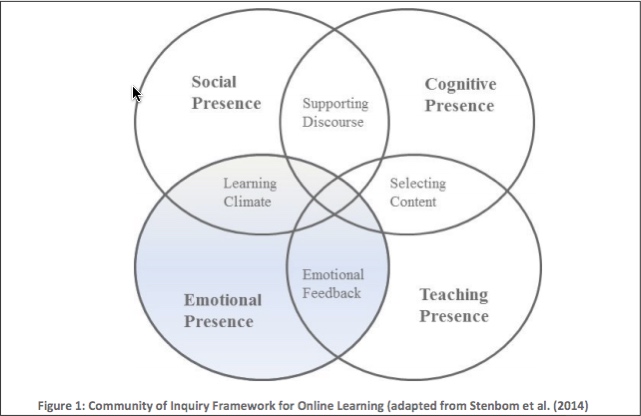
Terumi Miyazoe and I (2015) discussed this empowerment and the ability for students to increase student-student and student-content interaction in the context of my interaction equivalency theory in our 2015 paper Interaction Equivalency in the OER and Informal Learning Era.
It strikes me that the critical elements of learner, interface and autonomous presence flow directly from Alberta Bandura’s (1989) work on agency in which he described three types of agency in social cognitive theory. These are autonomous, mechanical and emergent interactive agency (p. 1175). The word agency evolved from Medieval Latin agentia “active operation,” Certainly the capacity for “active operation” can include most of the elements of interface presence since being productively active implies control over the environment. Shea’s reminder of the importance of the learning presence in the control of “active operation” is also subsumed in agency.
So my own suggestion in the search for the ‘missing’ element(s) in the COI model is to add agency presence to the COI trinity. This term is simpler than autonomous, builds on the seminal work of Bandura and captures the components mentioned by both Shea and Lam.
But where does that leave emotional presence? I argue that emotion is included in social presence (for example the indicator use of affective language) elements and in agency presence in line with both Bandura’s autonomous interaction – the capacity to recognize and use the power, insights and liability of emotional responses and his emergent agency in which emotions can be used to reach insights not accessible to those denying their existence or unable to deal with them effectively.
I haven’t validated this model empirically but it would likely include and consolidate many of the elements identified by Lam in her autonomous presence and Shea in his learning presence. And hopefully this addition would bring the COI model more in line with the emergent and networked resource ideas of modern connectivist theories.
References
Annand, D. (2011). Social presence within the community of inquiry framework. The International Review of Research in Open and Distributed Learning, 12(5), 40-56.
Bandura, A. (1989). Human agency in social cognitive theory. American psychologist, 44(9), 1175.
Cleveland-Innes, M., & Campbell, P. (2012). Emotional presence, learning, and the online learning environment. The International Review of Research in Open and Distributed Learning, 13(4), 269-292.
Lam, J. (2015). Autonomy presence in the extended community of inquiry International Journal of Continuing Education and Lifelong Learning, 81(1), 39-61.
Miyazoe, T., & Anderson, T. (2015). Interaction equivalency in an OER, MOOC and informal learning era. Best of Eden 2013 Issue – EURODL. http://www.eurodl.org/?p=special&sp=articles&inum=7&article=695.
Rienties, B., & Rivers, B. A. (2014). Measuring and understanding learner emotions: Evidence and prospects. Learning Analytics Community Exchange.
Salmon, G. (2000). E-moderating: The key to teaching and learning online. London: Kogan Page.
Shea, P., & Bidjerano, T. (2010). Learning presence: Towards a theory of self-efficacy, self-regulation, and the development of a communities of inquiry in online and blended learning environments. Computers & Education, 55(4), 1721-1731.
